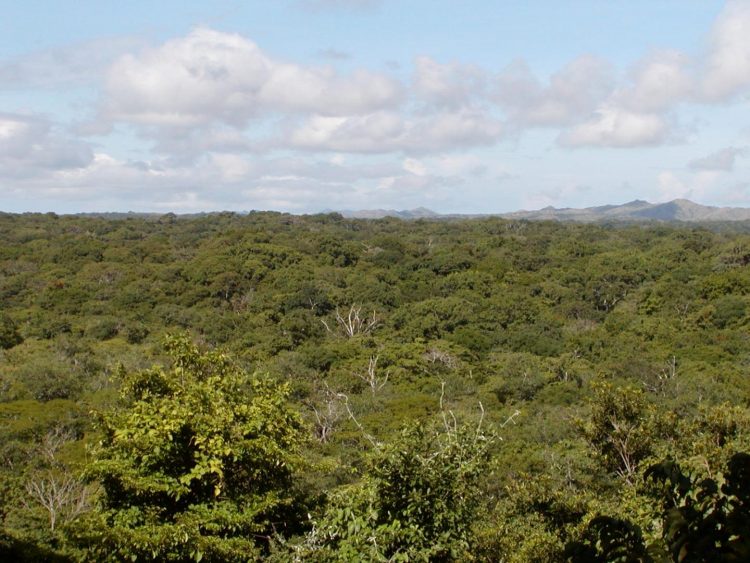Variation in antibiotic bacteria in tropical forest soils may play a role in diversity

This is a dry tropical forest where soil samples were collected. Credit: Dr. Jennifer Powers
A study published October 28 in the journal Biotropica represents a step toward a better understanding of the role antibiotic-bacteria play in the ecology of tropical forests.
University of Minnesota researchers, led by Kristen Becklund, found that antibiotic production by soil bacteria was widespread, but that the abundance and activity of the microbes varied across the landscape depending, in part, on nutrient availability.
“Our results suggest substantial differences in the capacities of microbial communities to suppress soil-borne diseases in tropical forests,” says Becklund. “The fact that we are seeing all this variation is exciting because it means that these bacteria may be influencing diversity in tropical forests.”
Differences in the capacities of microbial communities to suppress soil-borne diseases in tropical forests could impact the composition of the forest itself. Antibiotics in soil are believed to act as weapons that allow microbes to kill their competitors, including pathogens.
This antibiotic inhibition can lead to declines in populations of plant pathogens and can even result in the development of disease-suppressive soils. Because different plants are susceptible to different pathogens and diseases, variation in the abundance, effectiveness and specificity of microbially-produced antibiotics has the potential to influence not only plant disease and productivity, but also the composition of tree species in the forest.
“This study is an initial first step to open the black box of microbial community function in tropical forest soils,” says Powers.
Future studies will focus on the causes of the variation in density and activity and the potential consequences for tropical forest communities.
Becklund is a graduate student in the College of Biological Sciences' Ecology, Evolution and Behavior program. Co-authors include Linda Kinkel, a professor in the Department of Plant Pathology in the College of Food, Agricultural and Natural Resource Sciences, and Jennifer Powers, a professor in the Departments of Ecology, Evolution and Behavior and Plant Biology in the College of Biological Sciences.
Media Contact
More Information:
http://www1.umn.edu/twincities/index.htmlAll latest news from the category: Agricultural and Forestry Science
Newest articles

Sea slugs inspire highly stretchable biomedical sensor
USC Viterbi School of Engineering researcher Hangbo Zhao presents findings on highly stretchable and customizable microneedles for application in fields including neuroscience, tissue engineering, and wearable bioelectronics. The revolution in…

Twisting and binding matter waves with photons in a cavity
Precisely measuring the energy states of individual atoms has been a historical challenge for physicists due to atomic recoil. When an atom interacts with a photon, the atom “recoils” in…

Nanotubes, nanoparticles, and antibodies detect tiny amounts of fentanyl
New sensor is six orders of magnitude more sensitive than the next best thing. A research team at Pitt led by Alexander Star, a chemistry professor in the Kenneth P. Dietrich…





















